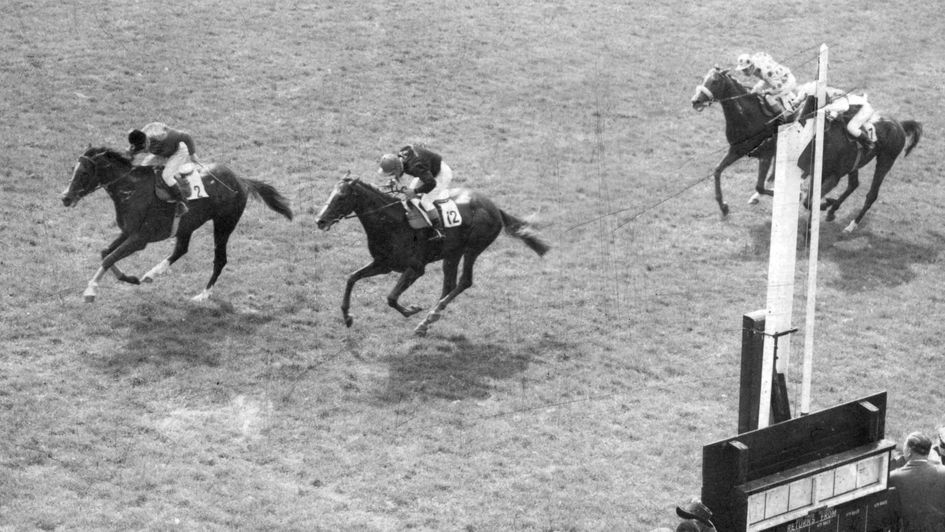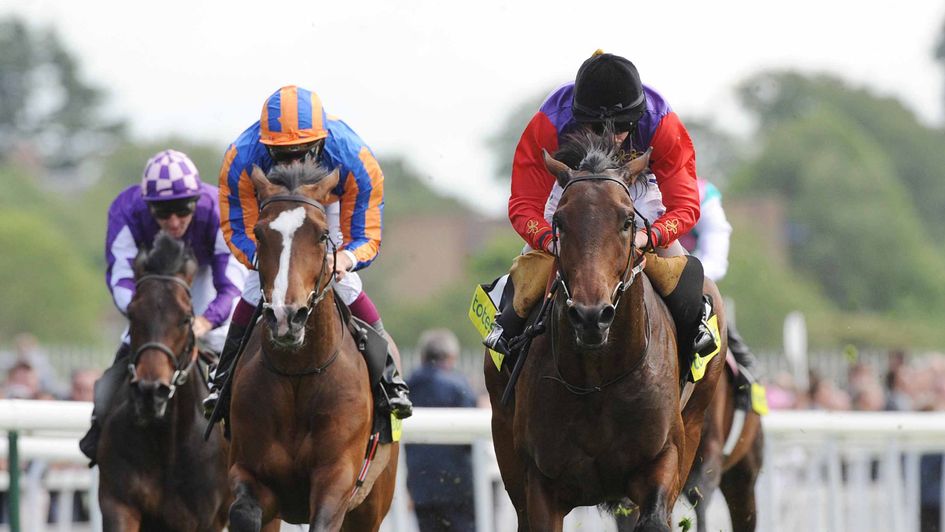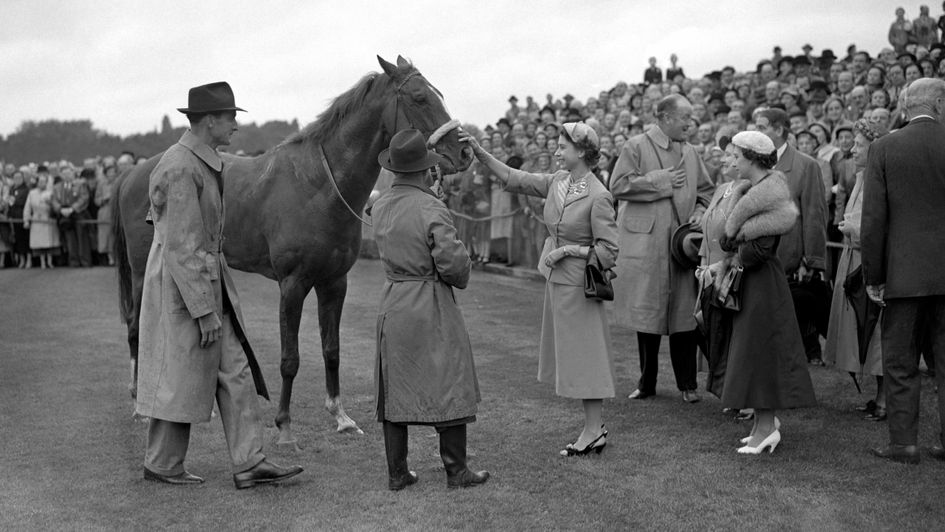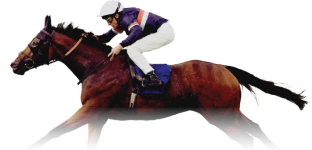John Ingles looks at the five best horses owned by Queen Elizabeth II based on their peak Timeform ratings.
AUREOLE (Timeform rating 132)
As well as being one of the best horses to race for the Queen, Aureole was also one of the very first, as she inherited him as an unraced two-year-old on the death of her father, King George VI, in 1952. Trained by Captain Cecil Boyd-Rochfort at Newmarket, Aureole ran just twice at two, finishing sixth in the Middle Park Stakes after making a winning debut at York. Although an excitable type with a tendency to pull hard, Aureole proved one of the best of his generation at three, though was beaten in all three classics.
He was fifth in the 2000 Guineas but a step up in trip to win the Lingfield Derby Trial made him a leading Derby contender just days after his owner’s coronation. Aureole ran well to finish four lengths second to Pinza at Epsom and, after finishing third in the Eclipse, he was runner-up to Pinza again, beaten three lengths, in the King George VI & Queen Elizabeth Stakes. With no Pinza in the field for the St Leger, Aureole was made 6/4 to win the final classic but he pulled too hard before finishing third to stablemate Premonition. Aureole ended his three-year-old campaign by winning the Cumberland Lodge Stakes at Ascot, and, having received treatment by a neurologist over the winter, it was a more mature Aureole, both physically and mentally, who returned at four.
His first big win of 1954 was a five-length victory in the Coronation Cup which he followed by winning the Hardwicke Stakes at Royal Ascot. As a result, Aureole was sent off favourite for another attempt at the King George. Despite unseating his jockey on the way to the start and being slowly away, Aureole won what was just the fourth running of the race named after the Queen’s parents by three-quarters of a length from the French colt Varos with the 2000 Guineas winner Darius back in third. Timeform described the chestnut Aureole as ‘a handsome, powerful individual with the ability to match his looks’ and he went on to be a champion sire, producing the Derby winner St Paddy among others.
PALL MALL (132)
The Queen’s first classic winner came when Carrozza won the 1957 Oaks and a second one soon followed when Pall Mall gave royal trainer Boyd-Rochfort his first classic success in the following season’s 2000 Guineas. At 20/1, though, Pall Mall was very much the stable’s second string to Bald Eagle who was sent off favourite.
Pall Mall had won the New Stakes (nowadays the Norfolk) at Royal Ascot before being placed in his remaining two-year-old starts in the July Stakes, the Gimcrack (third to Phil Bull’s Pheidippides) and the Champagne Stakes in which he was beaten a short head. Pall Mall won the Thirsk Classic Trial before his 2000 Guineas success and then won the inaugural running of the Lockinge Stakes at Newbury, but on his final start as a three-year-old he was beaten by the 2000 Guineas runner-up Major Portion who turned the tables on him in the Sussex Stakes.
At four, Pall Mall won the Lockinge again before starting favourite under top weight for the Royal Hunt Cup at Royal Ascot and ran well in second conceding 20 lb to the winner Faultless Speech. Pall Mall ended his racing career with a win in the Midsummer Stakes at Newmarket.

HIGHCLERE (129)
The Ian Balding-trained Escorial was widely expected to be the Queen’s classic filly of 1974 but she disappointed in the Oaks after winning the Musidora impressively. Instead, it was the Dick Hern-trained Highclere who emerged to complete a unique double in the 1000 Guineas and Prix de Diane. Highclere’s only win before the Guineas, in which she made her reappearance, had come when making heavy weather of landing the odds in a maiden at Newbury on the last of her three starts as a two-year-old.
Blinkered for the first time at Newmarket (she wore the headgear for all her starts at three), Highclere swished her tail once or twice under the whip but held on for a short-head win over the subsequent Oaks winner Polygamy as the pair pulled clear. Neither the course nor distance of the Oaks was considered suitable for Highclere who was therefore sent for the shorter French equivalent. But the manner of her victory at Chantilly by two lengths from the favourite Comtesse de Loir, seeing the trip out well, suggested she’d stay a mile and a half after all. She proved as much when sent off second favourite for the King George VI & Queen Elizabeth Stakes on her next start in a field that also included the Derby winner Snow Knight. Although she finished strongly, Highclere proved no match for the top-class French four-year-old filly Dahlia who beat her easily by two and a half lengths.
She ran only twice more, finishing only sixth, behind Dahlia again, in the Benson & Hedges Gold Cup at York and then finished in rear in the Prix de l’Arc de Triomphe when encountering soft ground for the first time. From the same family as Aureole, Highclere proved a successful broodmare for the Queen, producing the Fillies’ Mile and Princess of Wales’s Stakes winner Height of Fashion among others. Nashwan, Deep Impact and Baaeed are all top-class horses who trace back to Highclere.
DUNFERMLINE (133)
Highclere’s connections enjoyed classic success with another filly just three years after Highclere, with Dunfermline completing the Oaks-St Leger double in the Queen’s Silver Jubilee year. Placed in all three of her starts at two, including the May Hill Stakes and Fillies’ Mile, Dunfermline got off the mark in the Pretty Polly Stakes at Newmarket on her reappearance at three when beating the subsequent Irish 1000 Guineas winner Olwyn.
By Oaks standards, Dunfermline didn’t have a great deal to beat at Epsom and it was her stamina which won her the race, with her jockey Willie Carson hard at work on her towards the rear on the descent to Tattenham Corner and then Dunfermline needing most of the straight to get on top for a three-quarter length win over Freeze The Secret. On her only outing between Epsom and Doncaster Dunfermline was beaten into third in a steadily-run Yorkshire Oaks, so when she lined up against the odds-on Great Voltigeur winner Alleged in the St Leger she was accompanied by a pacemaker Gregarious to make it a good test.
He did his job until Alleged went for home on the home turn but Dunfermline went with him before taking the lead a furlong and a half out. Both the first two gave their all in pulling a long way clear of the third, with Dunfermline having a length and a half to spare over Alleged at the line. However, with the first two coming close together, the result was only confirmed twenty minutes later following a stewards’ inquiry. The pair met again in the Prix de l’Arc de Triomphe the following month but Alleged turned the tables, having Dunfermline back in fourth. Dunfermline failed to win in four more attempts, finishing third in the Prix Royal-Oak back at Longchamp on her final three-year-old start and running her best race at four when runner-up in the Hardwicke Stakes at Royal Ascot.
CARLTON HOUSE (125)
Carlton House was one of the best horses to race in the royal colours in the twenty-first century. He was also the Queen’s first runner in the Derby for thirty years when sent off favourite at Epsom in 2011.
He’d won two of his three starts for Sir Michael Stoute by then, a Newbury maiden at two in which he had powered away for a nine-length win in soft ground, and then a comfortable success in the Dante Stakes when giving his owner her first success in a British pattern race for more than ten years. Carlton House went close as the 5/2 favourite in the Derby – the only British classic the Queen failed to win – not getting the smoothest of runs before being beaten a head and three quarters of a length into third behind Pour Moi and Treasure Beach.
After finishing a disappointing fourth to Treasure Beach in the Irish Derby, Carlton House missed the rest of the season with a setback and returned over shorter distances as a four-year-old. His campaign began well with a decisive win in the Brigadier Gerard Stakes at Sandown and followed that with a career-best effort at the time to be beaten two and a quarter lengths by So You Think in the Prince of Wales’s Stakes at Royal Ascot. Carlton House’s next two starts came at a mile, including when fourth in the Queen Elizabeth II Stakes, while his final start of the year came when sixth in the Hong Kong Cup. That wasn’t the end of his racing career, though.
He was then transferred to Gai Waterhouse in Sydney, becoming the first horse owned by the Queen to be trained in Australia. While he didn’t win in five starts for his new stable, he ran at least as well as he’d ever done in Britain when going down by a short head in the final stride to the New Zealand mare Silent Achiever in the Group 1 Ranvet Stakes at Rosehill.

Related content
- Sporting world mourns death of the Queen
- Racing suspended following Queen's death
- BHA remember 'one of greatest supporters'
- Henderson and Stoute lead tributes
- The Queen: A lifetime in racing
- The Queen in racing: Her five best horses
- The Queen's affinity with the sport of kings
- The Queen at Royal Ascot
- Carson remembers great days in royal silks









